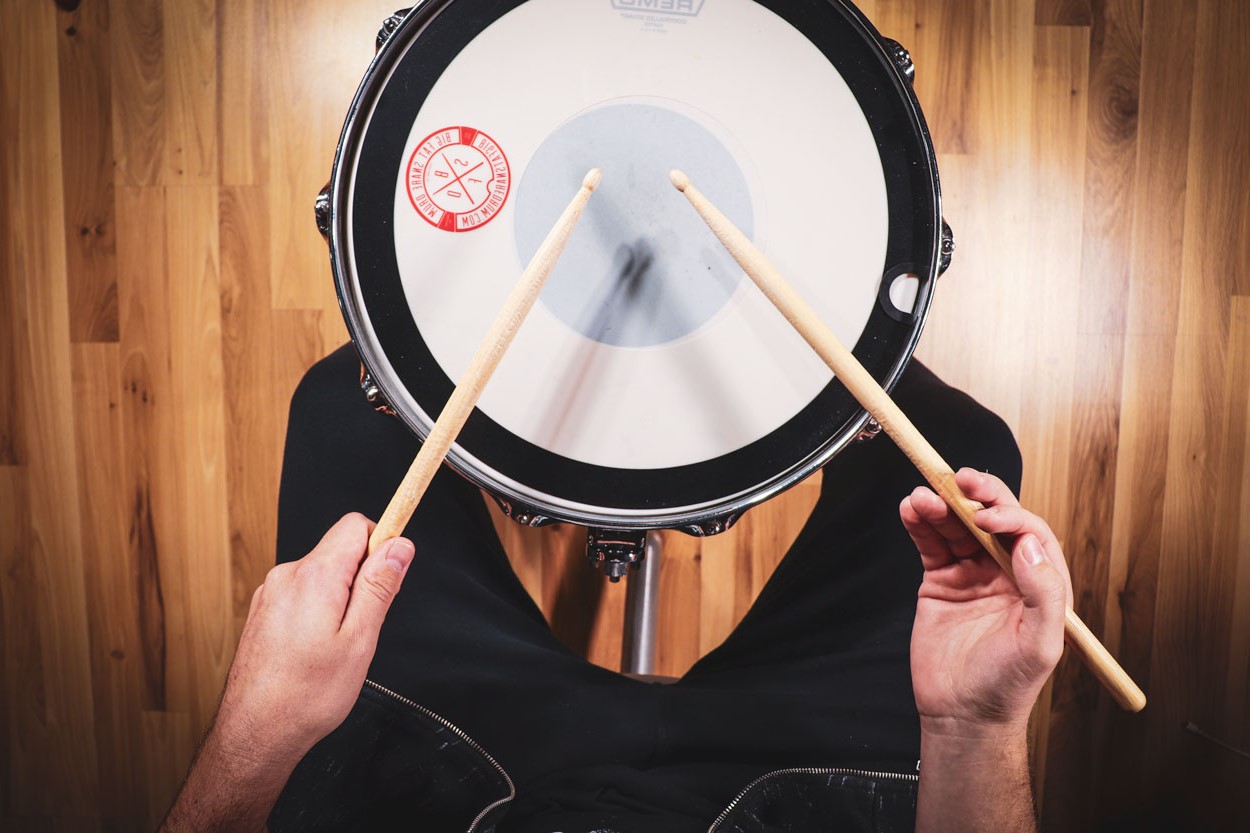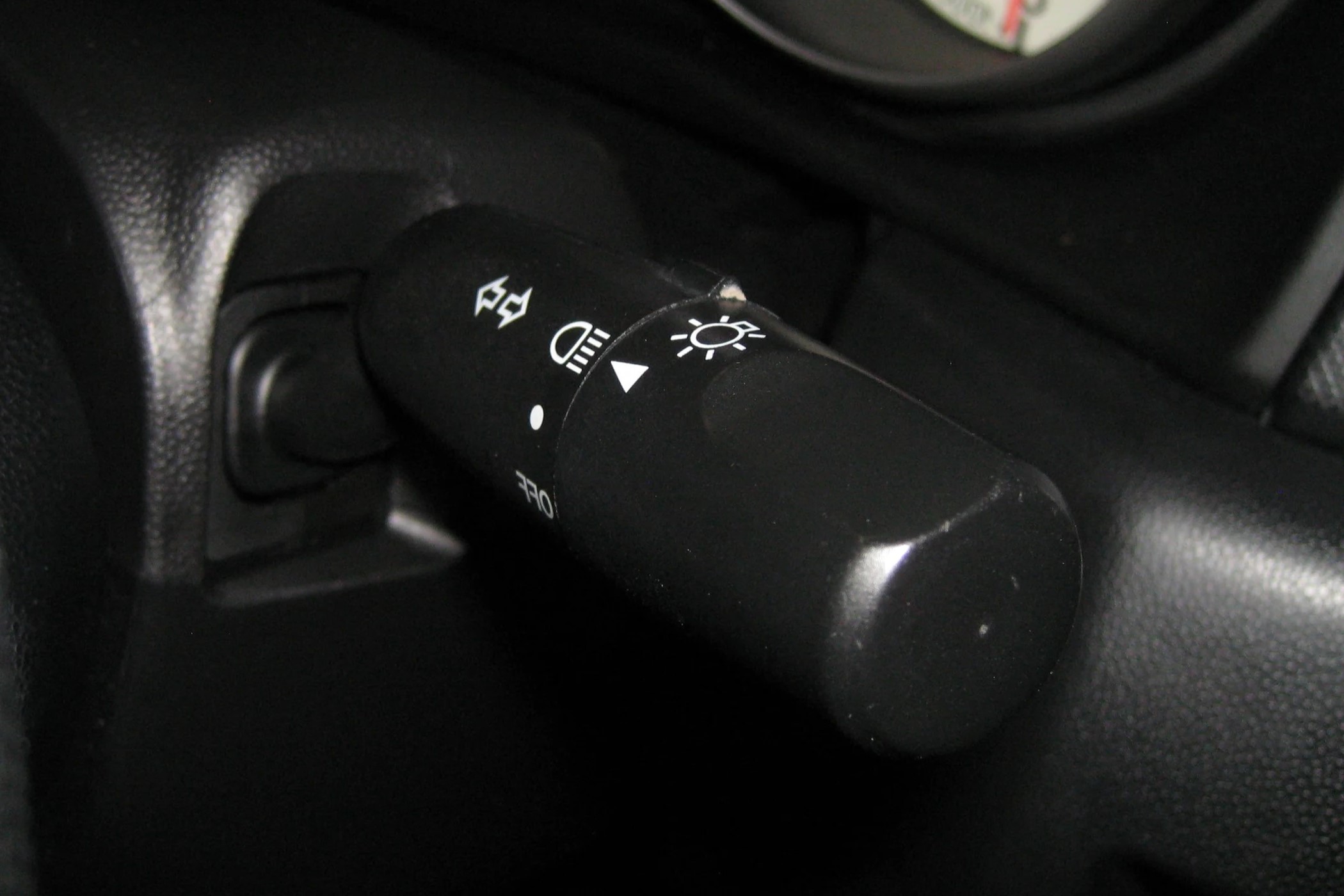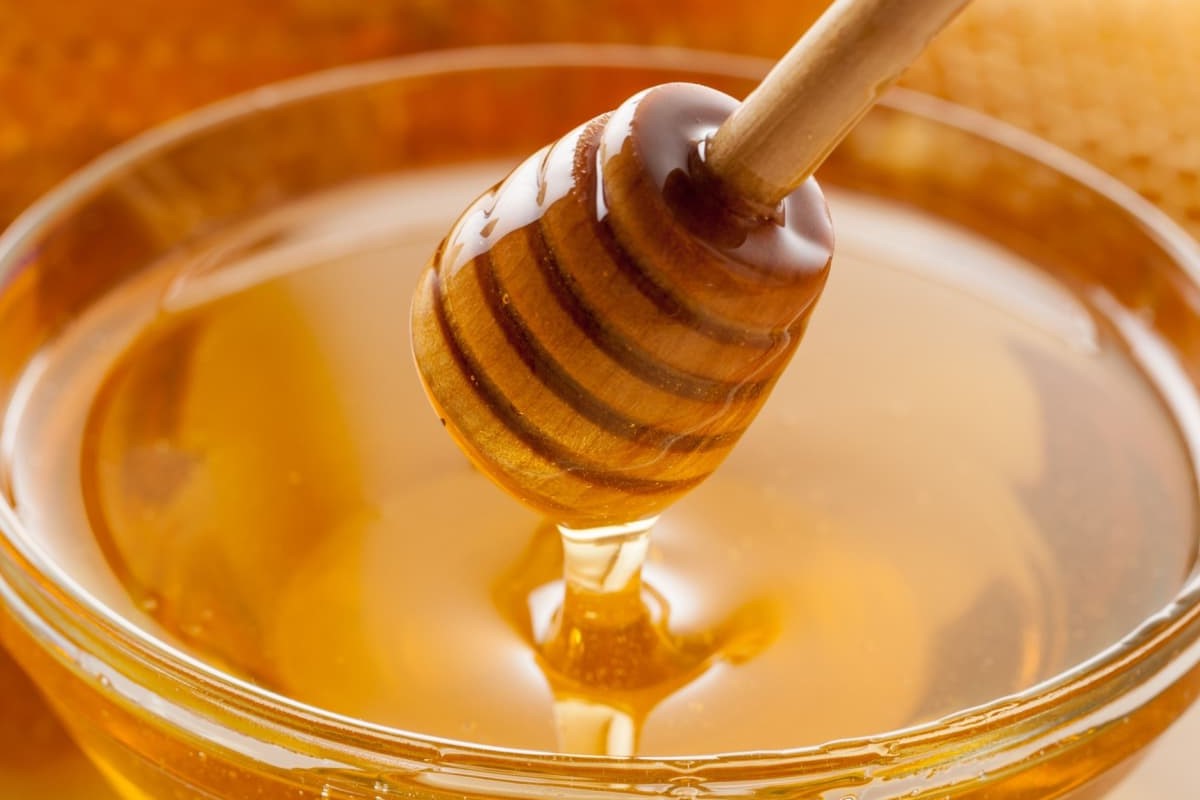

Music
How To Hold Drumsticks
Published: February 25, 2024
Learn the proper technique for holding drumsticks and improve your music skills with our step-by-step guide. Master the art of drumming with expert tips and advice.
(Many of the links in this article redirect to a specific reviewed product. Your purchase of these products through affiliate links helps to generate commission for Noodls.com, at no extra cost. Learn more)
Table of Contents
Introduction
Drumming is an exhilarating and rhythmic art form that has been an integral part of human culture for centuries. From tribal rituals to modern music genres, the beat of the drum has the power to captivate and energize audiences. At the heart of this captivating art lies the fundamental skill of holding drumsticks. The way a drummer holds their drumsticks can significantly impact their performance, tone, and overall musical expression.
In this comprehensive guide, we will delve into the essential techniques and principles of holding drumsticks. Whether you are a novice drummer eager to learn the basics or an experienced percussionist seeking to refine your skills, mastering the art of holding drumsticks is crucial for achieving precision, control, and finesse in your drumming endeavors.
Join us as we explore the nuances of choosing the right drumsticks, understanding proper grip and positioning, and mastering both basic and advanced drumming techniques. By the end of this guide, you will have gained valuable insights and practical knowledge that will elevate your drumming prowess to new heights.
So, let's embark on this rhythmic journey and unlock the secrets to holding drumsticks with confidence and proficiency. Whether you're drawn to the thunderous beats of rock music, the intricate rhythms of jazz, or the pulsating energy of pop and electronic music, the art of holding drumsticks is a universal gateway to rhythmic expression and musical creativity.
Read more: How To Hold A Pool Stick
Choosing the Right Drumsticks
Selecting the right drumsticks is a crucial step in honing your drumming skills. With a myriad of options available, it's essential to understand the key factors that influence the choice of drumsticks. The following considerations will guide you in making an informed decision:
1. Drumstick Size and Weight
The size and weight of drumsticks play a pivotal role in determining the overall feel and sound produced. Drumsticks are available in various sizes, typically denoted by a combination of numbers and letters. For instance, 7A sticks are thinner and lighter, while 5B sticks are thicker and heavier. Choosing the appropriate size and weight depends on your playing style, genre, and personal preference.
2. Drumstick Material
Drumsticks are commonly crafted from wood, with hickory and maple being the most popular choices. Hickory drumsticks are renowned for their durability and resilience, making them suitable for heavy hitters and rock drummers. On the other hand, maple drumsticks offer a lighter feel and are favored by jazz and orchestral percussionists. Additionally, there are synthetic options such as carbon fiber sticks, which provide unique tonal characteristics and enhanced durability.
3. Tip Shape and Material
The tip of a drumstick significantly influences the articulation and tone produced when striking the drumhead. Drumstick tips come in various shapes, including acorn, barrel, and oval. Each tip shape produces distinct sounds, making it essential to experiment and find the one that complements your playing style. Furthermore, tips can be made from wood, nylon, or felt, each offering unique tonal qualities and response from the drumhead.
Read more: How To Hold A Pistol
4. Specialty Drumsticks
In addition to standard drumsticks, there is a wide array of specialty sticks designed to cater to specific musical styles and performance requirements. These include brushes for jazz and acoustic settings, mallets for orchestral percussion, and rods for a softer and more nuanced sound. Exploring these specialty options can open up new sonic possibilities and expand your drumming repertoire.
By carefully considering these factors and experimenting with different options, you can find the perfect drumsticks that resonate with your playing style and musical aspirations. Remember, the right drumsticks can significantly enhance your playing experience, allowing you to express yourself with precision and dynamism.
Proper Grip and Positioning
The way a drummer holds their drumsticks is fundamental to their technique and overall performance. Achieving a proper grip and positioning is essential for maximizing control, speed, and accuracy while minimizing fatigue and risk of injury. Let's delve into the key principles of proper grip and positioning that form the cornerstone of proficient drumming.
1. Matched Grip vs. Traditional Grip
Drummers primarily utilize two main grip styles: matched grip and traditional grip. In matched grip, both drumsticks are held similarly, with the palms facing downward and the sticks positioned parallel to each other. This grip is commonly employed in rock, pop, and marching band drumming. On the other hand, traditional grip involves holding the left stick (for right-handed drummers) in a unique manner, with the palm facing upward and the stick positioned between the thumb and index finger. Traditional grip is often favored in jazz, orchestral, and rudimental drumming.
2. Finger Control and Wrist Movement
Regardless of the grip style, drummers must focus on achieving a balance between finger control and wrist movement. The fingers play a crucial role in controlling the rebound and finesse of the drumsticks, while the wrist provides power and fluidity in striking the drums and cymbals. Maintaining a relaxed yet firm grip allows for seamless coordination between the fingers and wrist, enabling dynamic and expressive drumming.
Read more: How To Hold A Guitar
3. Fulcrum Point and Pressure Distribution
Understanding the concept of the fulcrum point is vital for achieving optimal control and dexterity. The fulcrum refers to the point on the drumstick where the fingers apply pressure to control the stick's movement. For matched grip, the fulcrum is typically located between the thumb and index finger, while traditional grip involves the index finger serving as the primary fulcrum. Proper distribution of pressure along the length of the stick ensures balanced and controlled strokes, facilitating nuanced articulation and dynamic range.
4. Hand and Arm Positioning
Maintaining the correct hand and arm positioning is essential for minimizing strain and maximizing endurance during extended drumming sessions. The hands should be positioned at a comfortable height above the drumheads, allowing for efficient and fluid movement. Additionally, the arms should be relaxed and positioned close to the body, promoting natural and unrestricted motion while minimizing tension and fatigue.
5. Drumstick Angle and Contact Point
The angle at which the drumsticks make contact with the drumheads significantly influences the tone and projection of the sound. Drummers should aim to strike the drums and cymbals at a consistent angle, optimizing the transfer of energy and producing a balanced and resonant sound. Experimenting with different contact points and angles allows drummers to explore a diverse range of tones and textures, adding depth and character to their playing.
Mastering the art of proper grip and positioning is a continuous journey that requires patience, dedication, and mindful practice. By honing these foundational skills, drummers can unlock their full potential and imbue their performances with precision, finesse, and musicality. Whether you're a beginner embarking on your drumming odyssey or a seasoned drummer seeking refinement, embracing the principles of proper grip and positioning will undoubtedly elevate your rhythmic prowess and musical expression.
Basic Drumming Techniques
Basic drumming techniques form the foundation upon which drummers build their skills and musical repertoire. These fundamental techniques encompass a range of essential skills that are integral to mastering the art of drumming. Whether you're just starting your rhythmic journey or seeking to reinforce your core skills, understanding and practicing these techniques is paramount to your growth as a drummer.
1. Single Stroke Roll
The single stroke roll is one of the most fundamental rudiments in drumming. It involves alternating strokes between the right and left hands, resulting in a continuous and even flow of notes. Mastering the single stroke roll is essential for developing hand coordination, speed, and endurance. This rudiment serves as a cornerstone for more complex patterns and fills, making it a fundamental skill for drummers across various genres.
2. Double Stroke Roll
Similar to the single stroke roll, the double stroke roll focuses on alternating strokes, but with two consecutive strokes per hand. This rudiment enhances dexterity, control, and dynamic range, as it requires precision and consistency in executing rapid double strokes. The double stroke roll is a versatile technique that adds depth and complexity to drum patterns, enabling drummers to create intricate and expressive rhythms.
3. Paradiddles
Paradiddles are a group of rudiments that combine single and double strokes in unique patterns, such as the "RLRR LRLL" paradiddle. These rudiments are invaluable for developing coordination, independence, and fluidity between the hands. By mastering paradiddles, drummers can expand their vocabulary of rhythmic patterns and embellishments, enhancing their ability to create compelling and diverse drumming phrases.
4. Bass Drum Techniques
In addition to hand techniques, mastering bass drum techniques is essential for achieving a well-rounded and dynamic drumming style. Techniques such as heel-toe, slide, and double pedal control enable drummers to produce powerful and articulate bass drum patterns. These techniques are particularly crucial in genres such as rock, metal, and fusion, where intricate and rapid bass drum patterns are prevalent.
5. Dynamics and Control
Understanding dynamics and control is fundamental to delivering expressive and engaging drum performances. Drummers must develop the ability to modulate the volume and intensity of their playing, ranging from soft and delicate passages to thunderous and impactful accents. By honing dynamic control, drummers can infuse their playing with emotion, energy, and musicality, captivating audiences and elevating the overall musical experience.
6. Rudimental Patterns
Rudimental patterns encompass a wide array of traditional drumming exercises, including flams, drags, and rolls. These patterns serve as building blocks for developing technical proficiency, precision, and creativity. By incorporating rudimental patterns into their practice routines, drummers can enhance their coordination, speed, and agility, laying the groundwork for versatile and expressive drumming capabilities.
Incorporating these basic drumming techniques into your practice regimen will undoubtedly enhance your drumming prowess and musical fluency. Whether you're focusing on traditional rudiments, exploring contemporary styles, or venturing into uncharted rhythmic territories, mastering these foundational techniques will empower you to express yourself with confidence, creativity, and precision. As you embark on your rhythmic odyssey, embrace the journey of continual growth and discovery, allowing the rhythmic pulse of the drums to guide and inspire your musical endeavors.
Advanced Drumming Techniques
Advanced drumming techniques represent the pinnacle of rhythmic artistry, showcasing the virtuosity and creativity of skilled drummers. These techniques transcend conventional paradigms, pushing the boundaries of rhythmic expression and musical innovation. As drummers ascend to higher levels of proficiency, they delve into a realm of intricate patterns, polyrhythms, and dynamic textures that captivate audiences and inspire awe.
1. Polyrhythms and Metric Modulations
Polyrhythms, a hallmark of advanced drumming, involve the simultaneous juxtaposition of multiple rhythmic patterns. Drummers adept in polyrhythmic techniques can seamlessly interweave disparate time signatures, creating mesmerizing and complex rhythmic tapestries. Furthermore, mastering metric modulations allows drummers to fluidly transition between different tempos and rhythmic subdivisions, adding a layer of sophistication and unpredictability to their performances.
Read more: The Hidden Meaning Behind “How’s It Going?”
2. Odd Time Signatures and Unconventional Phrasing
Exploring odd time signatures, such as 5/4, 7/8, or 9/8, challenges drummers to navigate unorthodox rhythmic landscapes with precision and creativity. Embracing these unconventional meters opens up new avenues for rhythmic exploration, fostering a sense of unpredictability and intrigue in musical compositions. Additionally, incorporating unconventional phrasing and accent patterns within these time signatures adds depth and complexity to drumming arrangements, elevating the overall musical impact.
3. Linear Drumming and Independence
Linear drumming involves crafting patterns where no two limbs strike simultaneously, creating intricate and interwoven rhythmic motifs. This advanced technique demands exceptional limb independence and coordination, allowing drummers to craft dynamic and intricate grooves that defy traditional rhythmic constraints. By mastering linear drumming, drummers can unleash a torrent of polyrhythmic textures and syncopated patterns, showcasing their technical prowess and musical ingenuity.
4. Hybrid Rudiments and Extended Techniques
Advanced drummers often delve into the realm of hybrid rudiments, which combine traditional rudiments with modern variations and embellishments. These hybrid rudiments expand the drummer's vocabulary, enabling the creation of innovative and nuanced rhythmic phrases. Furthermore, exploring extended techniques such as ghost notes, drags, and buzz rolls adds depth and expressiveness to drumming performances, allowing for subtle nuances and dynamic articulations that enrich the musical tapestry.
5. Incorporating Electronics and Sampling
In the contemporary landscape of drumming, the integration of electronics and sampling has become a defining feature of advanced techniques. Drummers adept in electronic percussion can seamlessly blend acoustic and electronic elements, creating immersive sonic landscapes and pushing the boundaries of traditional drumming. By incorporating triggers, pads, and electronic effects, drummers can expand their sonic palette, infusing their performances with innovative textures and sonic explorations.
Read more: How To Say “How You Say” In Spanish
6. Expressive Dynamics and Articulations
Mastering advanced drumming techniques goes beyond technical proficiency; it encompasses the art of expressive dynamics and articulations. Advanced drummers possess the ability to modulate their playing with finesse, seamlessly transitioning between delicate whispers and thunderous crescendos. By harnessing the full spectrum of dynamics and articulations, drummers can imbue their performances with emotion, intensity, and musical storytelling, captivating audiences with their nuanced and evocative drumming.
Incorporating these advanced drumming techniques into their repertoire empowers drummers to transcend boundaries, unlock new creative horizons, and redefine the art of rhythmic expression. As drummers continue to push the envelope of innovation and virtuosity, the rhythmic tapestry of music evolves, enriched by the boundless creativity and technical mastery of advanced drumming techniques.
Conclusion
In conclusion, the art of holding drumsticks is a foundational aspect of drumming that profoundly influences a drummer's technique, expression, and musicality. From choosing the right drumsticks to mastering proper grip and positioning, the journey of holding drumsticks encompasses a myriad of nuances and essential principles. As drummers embark on this rhythmic odyssey, they are propelled into a world of creativity, technical proficiency, and expressive storytelling through the medium of percussion.
By understanding the significance of selecting the right drumsticks, drummers can tailor their equipment to suit their playing style, genre, and sonic preferences. The considerations of size, weight, material, and tip shape empower drummers to curate a personalized arsenal of drumsticks that resonate with their musical aspirations. This deliberate selection process lays the foundation for a tactile and symbiotic connection between the drummer and their instruments, fostering a sense of familiarity and control that is indispensable in the pursuit of rhythmic mastery.
Furthermore, delving into the intricacies of proper grip and positioning unveils the artistry and finesse inherent in drumming. Whether embracing matched grip or traditional grip, drummers navigate the delicate balance of finger control, wrist movement, and pressure distribution to unlock the full potential of their drumming technique. The pursuit of optimal hand and arm positioning, coupled with a nuanced understanding of drumstick angle and contact point, empowers drummers to harness precision, power, and subtlety in their rhythmic expressions.
As drummers progress from mastering basic drumming techniques to embracing advanced methodologies, the journey of holding drumsticks becomes a testament to their dedication, creativity, and relentless pursuit of rhythmic excellence. The foundational rudiments, dynamic control, and expressive articulations woven into the fabric of drumming techniques serve as a testament to the drummer's commitment to continual growth and artistic evolution.
In essence, the art of holding drumsticks transcends the physical act of gripping a pair of sticks; it embodies the symbiotic relationship between the drummer, their instruments, and the boundless realm of rhythmic expression. It is a testament to the drummer's unwavering dedication to honing their craft, channeling their emotions, and weaving intricate sonic tapestries that resonate with audiences on a profound and visceral level.
As drummers embark on their rhythmic odyssey, the art of holding drumsticks stands as a timeless and revered tradition, a testament to the enduring allure and transformative power of percussion. With each stroke of the drumsticks, drummers etch their stories into the fabric of music, leaving an indelible mark on the rhythmic landscape and inspiring generations to come.









